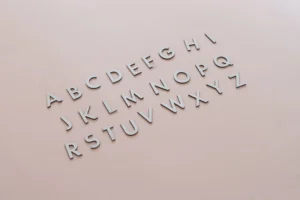
When it comes to creating a successful presentation, the choice of fonts is as important as the content itself. Professional fonts can enhance readability, set the tone, and give your slides a polished look. Whether you’re delivering a business pitch, a corporate report, or an academic lecture, using the right typography can significantly improve the impact of your presentation. In this article, we’ll explore the best professional fonts for presentations and how to use them effectively.
Choosing the right font is crucial for ensuring that your audience can easily read and understand your content. A professional font ensures that your message is clear, and the design looks cohesive. Font choice also influences the emotional response of the viewer, making your presentation feel more formal, creative, or engaging based on your goals.
Consider the following benefits of selecting professional fonts for presentations:

There are several key factors to consider when choosing professional fonts for your presentation. Each of these elements can influence how your audience interacts with your content and whether the presentation achieves its desired effect.
The primary factor to consider is legibility. If your audience cannot easily read the text on your slides, they may lose interest or fail to understand your key points. Choose fonts with clean lines, clear letterforms, and minimal embellishments to ensure legibility at different screen sizes and distances.
Make sure the fonts you choose are compatible with the presentation software you’re using, such as Microsoft PowerPoint or Google Slides. Stick to commonly available fonts that are likely to render correctly across different platforms and devices, reducing the risk of font substitution or formatting issues.
Your font choice should match the tone of your presentation. For example, a formal business presentation may call for a sleek sans-serif font like Helvetica, while a creative design pitch could benefit from a more expressive font. Consider the audience and the message you want to convey when selecting the style.
Effective font pairing can add visual interest to your presentation without overwhelming the viewer. A common approach is to pair a sans-serif font for headings with a serif font for body text, or vice versa. This contrast helps create a hierarchy of information, guiding the audience’s attention to the most important points.

Now that we’ve covered why font choice matters, let’s look at some of the best professional fonts for presentations. These fonts are widely recognized for their clarity, style, and versatility, making them ideal for a variety of presentation types.
Arial is a sans-serif font known for its simplicity and readability. It’s commonly used in professional settings because of its clean lines and neutral appearance. Arial works well for both headings and body text, ensuring that your presentation looks polished and is easy to follow.
Helvetica is another popular sans-serif font, often chosen for its modern, minimalist design. Its geometric shapes and uniform letter spacing make it highly legible at any size, making it an excellent choice for presentations that require a professional yet sleek appearance.
Times New Roman is a classic serif font that conveys formality and tradition. While it is often associated with printed materials, it can still be used effectively in presentations, especially in more formal or academic contexts. It’s an ideal font for body text in lengthy slides.
Calibri is the default font for Microsoft Office applications, and it’s a great option for presentations. It offers a balanced combination of professionalism and approachability. The rounded edges of its letterforms create a friendly, modern look without sacrificing legibility.
Open Sans is a versatile sans-serif font that is well-suited for both headings and body text. Its open letterforms and wide spacing make it extremely easy to read, even on small screens or from a distance. Open Sans is also available as a free font, making it a popular choice for presentations on a budget.
Lato is a humanist sans-serif font that is praised for its balance between structure and warmth. It has a friendly and approachable feel, making it ideal for presentations where you want to connect with the audience on a more personal level. The font’s rounded corners make it visually appealing without being too informal.
Roboto is a modern sans-serif font designed by Google for digital use. It’s a popular choice for presentations, especially in the tech and creative industries. Roboto is highly readable and has a clean, professional look that works well in both minimalist and content-heavy slides.

Even with the right fonts, how you use them in your presentation is equally important. Here are some best practices to ensure your slides are clear, visually appealing, and easy to understand:
Ensure that your text is large enough to be read easily from the back of the room or on smaller devices. As a general rule, use at least 30-point fonts for headings and 20-point fonts for body text. This not only enhances readability but also forces you to keep the information concise, preventing text-heavy slides.
Stick to a maximum of two different fonts in your presentation – one for headings and one for body text. Using too many fonts can make your slides look cluttered and unprofessional. If you want to add variety, consider using different weights (e.g., bold or italic) of the same font instead.
Consistency is key in any presentation. Ensure that your font sizes, colors, and styles remain consistent throughout your slides. This creates a cohesive design and helps the audience follow your content more easily.
Ensure that there is sufficient contrast between your text and background. Dark text on a light background (or vice versa) works best for visibility. Avoid placing text on complex or patterned backgrounds, as this can make it harder to read. If necessary, use a semi-transparent overlay to improve contrast.
While using all capital letters can be effective for headings or emphasis, avoid using it for body text. All caps can be difficult to read and may slow down the audience’s comprehension. Stick to sentence case or title case for body content.
If you need to draw attention to specific points, use bold text rather than increasing the font size or changing the font. Bold creates emphasis without disrupting the overall design of your slide. Be selective with its use to avoid diminishing its impact.
Before presenting, always test your slides on the device and screen size you’ll be using. Ensure that the fonts are legible from different distances, and that the text doesn’t get cut off or distorted when projected. This step is crucial to ensure that your presentation looks as professional as intended.
Choosing the right professional fonts for your presentation can significantly impact how your message is received. By prioritizing legibility, style appropriateness, and consistency, you can create a presentation that not only looks polished but also enhances the communication of your ideas. Fonts like Arial, Helvetica, and Roboto offer versatility and clarity, making them excellent choices for a wide range of presentation topics.
Remember, your font choice should align with the tone and purpose of your presentation. Follow best practices such as maintaining large font sizes, limiting font variety, and testing your slides in advance. With the right typography, you can ensure that your audience stays engaged and that your key messages are conveyed effectively.
Incorporating professional fonts into your presentation design is a simple yet powerful way to elevate the overall quality of your slides. By taking the time to carefully select fonts and apply them thoughtfully, you can make a lasting impression and deliver a compelling presentation.